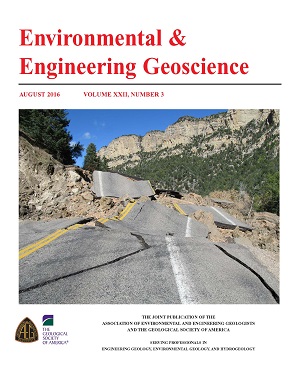In 2016, GSA published more than 100 book chapters and 500 journal articles. In case you missed any of these great papers, we asked our science editors to pick a notable paper or two that stood out to them as particularly significant contributions. Here, in no particular order, are their recommendations, all of which have been made freely available until 31 January. Enjoy.

Brendan Murphy, Geology
Paradigm shift in determining Neoproterozoic atmospheric oxygen
Nigel J.F. Blamey, Uwe Brand, John Parnell, Natalie Spear, Christophe Lécuyer, Kathleen Benison, Fanwei Meng, and Pei Ni
“If the analytical methods hold up, it’s a game-changer.”

Raymond M. Russo, Geosphere
Rock-avalanche dynamics revealed by large-scale field mapping and seismic signals at a highly mobile avalanche in the West Salt Creek valley, western Colorado
Jeffrey A. Coe, Rex L. Baum, Kate E. Allstadt, Bernard F. Kochevar Jr., Robert G. Schmitt, Matthew L. Morgan, Jonathan L. White, Benjamin T. Stratton, Timothy A. Hayashi, and Jason W. Kean
“The Coe et al paper shows how detailed field observations make it possible to reconstruct the mechanics of catastrophic landslides.”
Spatiotemporal evolution of fault slip rates in deforming continents: The case of the Great Basin region, northern Basin and Range province
Eugénie Pérouse and Brian P. Wernicke
“The Perouse and Wernicke paper is a landmark synthesis of paleoseismic observations demonstrating two modes of crustal extension and rifting in the Great Basin.”

Steven J. Whitmeyer, GSA Today
Tectonics and crustal evolution
Chris J. Hawkesworth, Peter A. Cawood, and Bruno Dhuime
“This GSA Today science article synthesizes multiple datasets (detrital zircon ages, SiO2 distributions, Rb/Sr ratios, etc.) to provide a modern view of the evolution of continental crust through time. It then provides new models of Hadean, Archean, and Modern continent crust (Fig. 2) in highly effective and useful images. As such it is an excellent example of a synthesis article that reaches a broad audience, with iconic images that will be useful in many contexts.”

Damian Nance, Lithosphere
Ediacaran–Cambrian paleogeography of Baltica: A paleomagnetic view from a diamond pit on the White Sea east coast
Natalia M. Fedorova, Mikhail L. Bazhenov, Joseph G. Meert, and Nikolay B. Kuznetsov
“If they are right, the repercussions are pretty important.”

Brian G. Katz, Environmental and Engineering Geoscience
Tracers of Groundwater Mixing in the Hueco Bolson Aquifer, Ciudad Juárez, Mexico
C.J. Eastoe, A.G. Olivas, and B.J. Hibbs
“The authors used a variety of stable isotopes and radioisotopes to describe groundwater origins, flow paths, mixing of river water and other sources, and preferred pathways for contaminant movement in groundwater in the Hueco Bolson aquifer beneath Ciudad Juarez. This information is critical for future water-supply engineering in Ciudad Juárez.”

Shan de Silva, Geosphere
Professionally held perceptions about the accessibility of the geosciences
Christopher L. Atchison and Julie C. Libarkin
“Geosphere is encouraging the geoeducation community to consider GSA journals as their home. This paper is an important effort to increase our understanding of the major barriers to access, equity, and inclusion in the geosciences. If we are interested in broadening participation, we need to be reading such works.”
Geology of the High Rock caldera complex, northwest Nevada, and implications for intense rhyolitic volcanism associated with flood basalt magmatism and the initiation of the Snake River Plain–Yellowstone trend
Matthew A. Coble and Gail A. Mahood

Arlo B. Weil, Lithosphere
Visualizing the sedimentary response through the orogenic cycle: A multidimensional scaling approach
Christopher J. Spencer and Christopher L. Kirkland
“With the ever-increasing number of detrital zircon papers being published, it is refreshing to see researchers take on new and innovative approaches in data analysis. This paper uses a novel multidimensional scaling approach on detrital zircon age spectra to glean valuable information on a given orogenic cycle (e.g., the Grenville orogeny) and its connection to geodynamical fluctuations at the plate margin.”

Richard A. Davis, GSA Books
Structural geology of the Baraboo District: An introduction
Stephen Marshak, M. Scott Wilkerson, and Joshua DeFrates
“This paper is not only of high quality in its science but the illustrations are the best that I have seen in decades. Really great!”